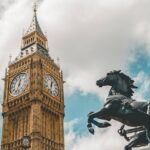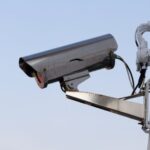Amnesty International has quantified the scope of the New York Police Department’s surveillance network. The organization had asked for volunteers to help map the city’s CCTV cameras as part of its Decode Surveillance NYC project in 2021, and is now reporting that there are more than 25,500 cameras scattered across the city.

However, the distribution of those cameras may ultimately be more telling than the actual number. Amnesty noted that the cameras are disproportionately clustered in neighborhoods with more non-white residents, and could therefore be used to reinforce discriminatory policing practices.
In that regard, privacy advocates described the cameras as a digital extension of the NYPD’s controversial stop-and-frisk policy, which gives the police broad leeway to question and pat down anyone suspected of a crime. The policy has overwhelmingly targeted minority communities, with Black people accounting for 59 percent of the NYPD’s stop-and-frisk incidents in 2019 even though they only make up roughly 24 percent of the NYC population.
According to Amnesty, placing more CCTV cameras in areas with more people of color subjects those residents to more scrutiny than their white counterparts, essentially creating a police dragnet in some neighborhoods and not others. That kind of imbalance demonstrates how facial recognition could have a discriminatory impact based on how it gets deployed, even if technology developers do manage to eliminate the bias in their matching algorithms.
For its part, the NYPD tried to justify its distribution by arguing that people of color are more likely to be the victims of violent crime. It also claimed that many of its CCTV cameras are not outfitted with facial recognition software, and that officers cannot use facial recognition without approval from a supervisor. Having said that, the NYPD has outright lied about its rampant use of facial recognition in the past, and even created a secret special expense fund to buy surveillance tech outside of official approval channels. With that in mind, there is considerable reason to question anything the NYPD says about its facial recognition practices.
A recent freedom of information report revealed that the NYPD used facial recognition in at least 22,000 cases between 2016 and 2019. NY Mayor Eric Adams has indicated that he wants to increase the city’s use of the technology.
Amnesty, on the other hand, is once again calling for a complete facial recognition ban. To underscore its point, the organization has created a new website that allows users to track the number of surveillance cameras they would be exposed to on any walking route through NYC.
Sources: Amnesty International, ABC News
–
February 16, 2022 – by Eric Weiss







Follow Us